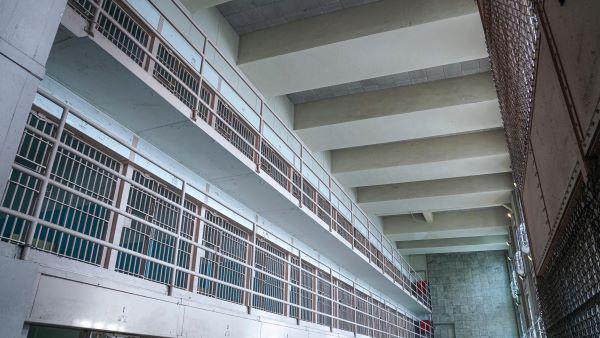
By Nicholas Turner, President & Director, and Kate Kahan, Director of Federal Policy, Vera Institute of Justice
Across the country, states are leveraging federal dollars from the American Rescue Plan Act’s (ARPA) sizeable and flexible State and Local Fiscal Recovery Funds (SLFRF) to invest in programs—like community violence interventions and behavioral health support and diversion programs—that will reduce the country’s overreliance on prisons. Alabama, however, has taken the opposite approach, injecting $400 million intended for COVID-19 relief into a new mega-prison construction plan.
Vera Institute of Justice
Building more prisons violates the guiding purpose of the American Rescue Plan (ARP): to foster a strong and equitable recovery that will uplift the communities most impacted by the pandemic—namely, low-income communities and communities of color. It’s clear that we need stronger federal funding guidelines that point local governments toward a path of justice driven by community input and equitable outcomes across race, ethnicity, and socioeconomic status.
Although Alabama prisons are notorious for their staggering rates of violence, the state’s problems are far from unique. As is the case for many prisons nationwide, Alabama Department of Corrections (ADOC) facilities are severely overcrowded and understaffed, which has bred a pervasive culture of indifference where incidents of violence are commonplace yet routinely ignored, misreported, or even encouraged by prison staff. Since 2016, the U.S. Department of Justice (DOJ) has engaged in multiple investigations of ADOC and urged the state to reexamine its disciplinary processes and explore the feasibility of transferring incarcerated people to non-ADOC facilities. Yet ADOC has continuously failed or refused to implement substantial changes. In December 2020, DOJ moved further, filing a lawsuit against the state for its ongoing failure to protect the constitutional rights of people living behind bars.
Almost one year later, Governor Kay Ivey has proposed a massive $1.3 billion plan— with $400 million coming out of the ARP—to construct at least two new 4,000-bed men’s prisons in the state. This plan, outlined in Alabama House Bill 4, garnered swift bipartisan support and was signed into law by Ivey on October 1, 2021.
In expressing their support of this plan, Alabama lawmakers argue that by building more prisons, the rest of ADOC’s problems will be solved: staff will be better situated to manage threats of violence, immediate safety risks will be alleviated, and ADOC will finally be able to introduce meaningful rehabilitative programming for people who are incarcerated. They ignore other, obvious solutions to overcrowding: slowing the flow of people into prison and reducing unconscionably long sentences.
But this all-too-familiar thinking—that more prisons equal more safety—is deeply misguided. Research consistently shows that prisons do not make our communities safer and that incarceration can lead to more crime. Additionally, increased prison spending rarely goes toward resources available to incarcerated people. Instead, increased spending tends to lead to higher personnel costs and higher rates of incarceration. And in the United States, higher rates of incarceration will inevitably mean a disproportionate number of Black and Latinx people behind bars.
The ongoing crisis in U.S. prisons will not be alleviated by building more of the facilities that have historically undermined public health and equity. Instead, the federal government should guide states toward concerted decarceration efforts and encourage investments in programs that have already proven successful in keeping people out of the system, such as community-based pretrial release programs and crisis response teams.
Such investments are in line with the guidelines the U.S. Treasury has outlined for ARP spending. Although states have flexibility in determining how to spend ARP dollars, the Treasury has encouraged states to use these funds to foster an “inclusive, and equitable recovery…by addressing ‘the systemic public health and economic challenges’ that have driven the most ‘severe impacts of the pandemic among low-income communities and people of color.’”
Adding more power to prisons, institutions that have disproportionately harmed these very communities—and especially Black communities—long before the pandemic, undermines this purpose. To preserve the intended impact of the ARP, the Biden administration should explicitly ban the use of ARP dollars for any projects that expand our deeply discriminatory and harmful criminal legal system, like the prison expansion in Alabama.
While the American Rescue Plan gives states the chance to build a healthy, safe, and equitable recovery, this opportunity will not be realized until federal funding reflects the lessons we already know: injecting more money into our system of mass incarceration does not make anyone safer, nor does it contribute to equitable justice. The federal government needs to help states look beyond prisons and toward the community-based justice models that move us closer to a truly transformative recovery.
Siri Danielson, federal policy program assistant, contributed to this article.
This is a content marketing post from Vera Institute of Justice, a Forbes EQ participant. Forbes brand contributors’ opinions are their own.




